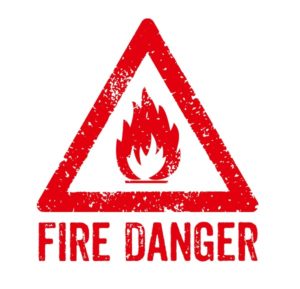
Firestopping is a small but critical step of construction. If a firestop is overlooked are not installed the right way, it increases the chances of fires, smoke spread, injury, property loss, and even death.
Bearing these risks in mind, a great deal of emphasis is placed on building fire-resistant walls and floors, regardless of whether it’s a residential or commercial project. Since proper firestopping can prevent many different risks, it’s important to put forth the extra effort into making sure penetrations are firestopped properly the first time.
Take a look at 3 common firestop mistakes that are made, and what you can do to prevent them.
Using Products That Aren’t Third Party Tested
There are mishaps that take place before even installing the firestop. Mainly, this has to do with getting firestops tested by a third party before having them installed. There are occurrences of people not getting their firestops tested, and this could mean the firestop is unreliable, and might not be meeting the requirements of US model building codes.
Make sure to find a trustworthy third party that has tested and approved of the firestop you’re looking to install. A reliable firestop should be able to pass fire exposure and hose stream tests.
Annular Space That’s Not Right
Annular space is the space between your firestopping system device and the closest inside edge of the opening space in which you’re installing it. The annular space will depend on the shape of the opening, and the penetrant type that you’re installing through it. Usually, an installation will have a range of annular space by which it needs to abide.
Not giving a a firestop the appropriate space, too much or too little, will prevent it from functioning properly. This means smoke or fire could get through gaps or the firestop component will be unable to stay in place when there’s a fire.
Make sure to put a product in a place that lets it expand, contract, and move. Give it space that prevents smoke and fire from getting in while also allowing it to fend off fires if necessary.
Mineral Wool Isn’t Properly Installed
Many fire-resistant joint systems use joints that contain mineral wool. This seals the joints from fire and smoke that would try to pass through the walls or floor. There are problems that can come up using mineral wool both during and after installation. Sometimes, the wool isn’t the right density. This can result in system failure in the event of a fire. Also, if calculations aren’t made properly, mineral wool could get improperly compressed. This is a huge safety concern because it makes the wool more vulnerable to fire.
If you want to avoid mishaps with mineral wool, try looking into solutions that don’t use mineral wool at all.
Concrete Visions Will Get The Job Done Right
Concrete Visions has been working with clients for over 25 years. Our G&M Services installers are certified with the industry’s major firestop product manufacturers. As part of our firestop service, we are able to assess abnormal field conditions and, with the manufacturer’s technical support assistance, provide engineering judgments in a timely fashion to comply with contract specifications.
Our Field Mechanics undergo ongoing training, including mandatory monthly safety meetings, weekly Toolbox Talks where safety and equipment information is shred, and trainings on safe work standards and safety best practices.
Visit our website to see how we can be of service to you, and follow us on Facebook, Twitter, and Linkedin.
